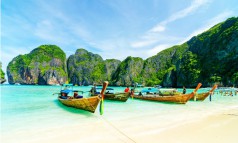



















Monday, May 05, 2025 09:30 [IST]
Last Update: Sunday, May 04, 2025 16:26 [IST]
The fertile plains southwest of the Teesta River, stretching eastward from the Koshi River along the Indo-Nepal border, have for centuries been a cradle of trade, culture, and agriculture. Rooted in a landscape enriched by alluvial deposits, this region has sustained a vibrant economy where indigenous practices of barter and community exchange thrived long before formal markets were introduced. The rhythm of trade here is not merely transactional—it is woven into the very fabric of daily life.
Indigenous Networks: The Dokkans,
Golas, and Haat Ecosystem:
Long before the advent of modern supermarkets
and wholesale outlets, the rural economy of this region revolved around two
distinct nodes of commerce: dokkans (or golas) and haats. These traditional
trade units, often overlooked in economic discourses, were and continue to be
the beating heart of rural livelihood and community cohesion.
Dokkans, akin to small daily trade
retail outlets, spring to life every morning and evening. Here, local farmers
and vendors sell seasonal produce, fish, eggs, and handmade wares—goods
transported often by walk or anima lcart from nearby fields. These roadside
lifelines not only ensure food sovereignty and freshness but also reinforce
community interdependence.
In contrast, haats—weekly bazaars—act as
the larger, pulsating arteries of this network. Typically held twice a week,
haats like the well-known Salbari Haat , Siliguri draw crowds from as far as
20–30 kilometers away. Traditionally held on Wednesdays and Saturdays, these
gatherings are both economic and social theatres, where goods, gossip, and
generations converge.
Each haat embodies a curated ecosystem
of trade:
However, the modern haat has evolved.
Today, it includes:
There’s something timeless about the village haat. People don’t just come to buy or sell—they come dressed in their best, turning a simple market into a weekly celebration. The haat is more than an economic exchange; it’s a stage for social interactions, laughter, gossip, and the occasional romantic rendezvous. Friends catch up over tea, elders trade stories, and young hearts exchange glances across stalls of fresh produce and handwoven textiles. Amidst the clang of coins and the hum of haggling, you might just find someone stealing a cursory glance your way… lol!
(The Walking Shop embodies grassroots entrepreneurship—if the market can’t find you, become the market. With no fixed store, the “electronic man” carries essentials like chargers and batteries through haat bazaar, turning mobility into opportunity)
(There’s a raw, liberating spirit of entrepreneurship in simply arriving at a haat bazaar, laying down a tarp, and starting business—turning a patch of ground into a dream. Amid this vibrant chaos, even buying a watermelon becomes symbolic: a mysterious ritual full of uncertainty, risk, and hope—just like the entrepreneurial journey itself)
(Siddarth Pradhan is a Travel & Tourism Consultant. Email: namanste.hhe@gmail.com)
